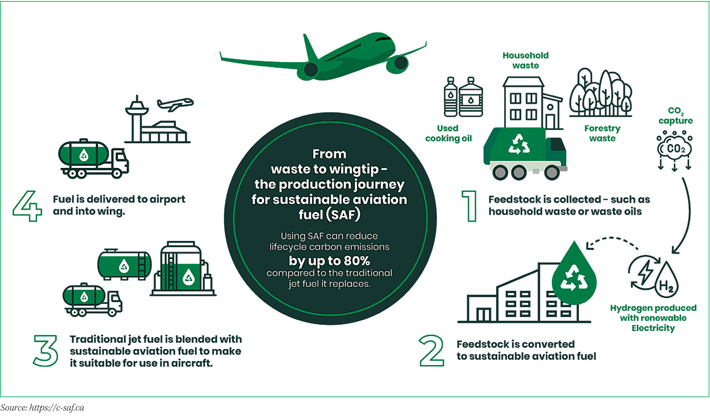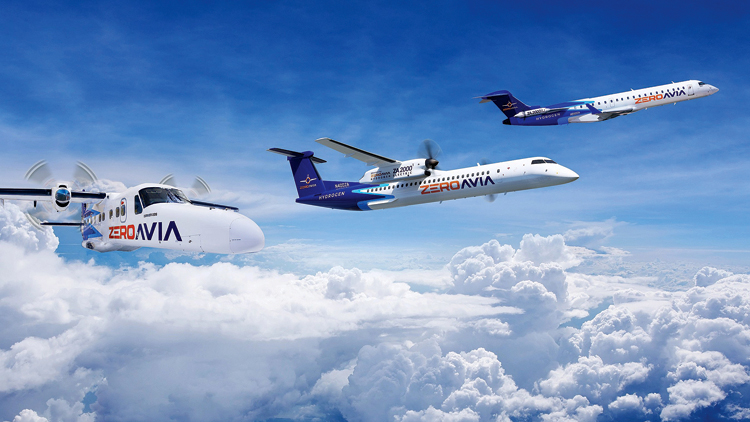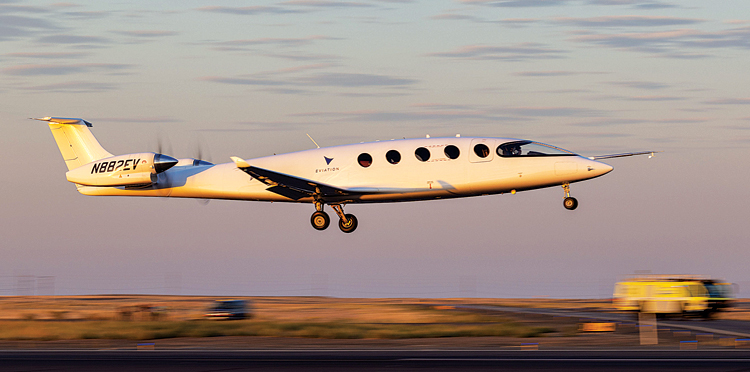Sustainability in Aviation – Important Industry Initiatives
The aviation industry’s aim is to attain a more environmentally sustainable path by reducing carbon emissions and promoting responsible practices throughout the lifecycle of air travel

As the global aviation industry emerges somewhat shaken from the COVID-19 nightmare, and traffic rebounds to near pre-pandemic levels, the outlook should have been bright. However, aviation executives are increasingly preoccupied by a new concern – environmental sustainability. And since anthropogenic global warming is one of the main factors responsible for runaway climate change this is an issue that will dominate the agenda for decades to come, not just for aviation but for every form of human economic activity.
The airline industry is scarcely a major emitter of greenhouse gases (GHG), generating just 2.5 per cent of global CO2 emissions and 12 per cent of emissions from all transport sources. Yet it is unquestionably one of the fastest growing sources. Aviation’s overall environmental impact is also probably much greater than its share of CO2 emissions alone might lead one to believe. This intensified effect is due to non-CO2 factors like nitrogen oxides (NOx), soot and contrails produced at high altitude. Net aviation emissions could more than triple by 2050, and the only way for aviation to become environmentally sustainable is to decarbonise. However, this is easier said than done because aviation is one of the toughest industries to decarbonise.
TARGETING SUSTAINABILITY
Sustainability in aviation refers to the efforts and practices aimed at reducing its environmental impact. At the October 2021 Annual General Meeting of the International Air Transport Association (IATA), member airlines agreed to commit to net zero carbon emissions by 2050. Adding weight to this decision, in October 2022, member states of the International Civil Aviation Organization (ICAO) also agreed to a long-term aspirational goal (LTAG) of net zero emissions from aviation by 2050. This brings governments on board. Net zero means the amount of GHG removed from the atmosphere is equal to that emitted by the specific human activity, in this case aviation. The industry is following a multipronged approach to try and achieve the very challenging net zero target facing it. It is also aligned with global efforts to avert climate change and achieve sustainability.
IATA estimates that SAF could contribute around 65 per cent of the reduction in emissions needed to reach its crucial 2050 net zero target
Engine and aircraft manufacturers are making concerted efforts to reduce fuel burn knowing that each tonne of fuel saved means a saving of three tonnes of CO2 emissions. Apart from more fuel-efficient engines, the measures include use of lighter materials and improved aerodynamics in aircraft construction. Airlines too are accelerating the replacement of their older fuelguzzling planes with advanced new aircraft with more efficient engines, optimising flight routes, reducing flight weight, and implementing economical operational procedures.
SAF FOR SUSTAINABILITY
The most important nearterm route to sustainability in aviation is the use of sustainable aviation fuel (SAF). SAF, which performs at operationally equivalent levels to regular aviation turbine fuel (ATF), is derived from renewable sources such as used cooking oil, other non-palm waste oils, solid waste from homes and industry, forestry waste and waste wood, besides energy crops including fast-growing plants and algae. Seven SAF production pathways have been certified and more are likely to follow. All SAFs are drop-in solutions – cleared for direct blending into existing fuel infrastructure at airports and fully compatible with current aircraft.

Depending on the feedstock used, the production process and the supply chain, SAF could reduce carbon emissions by as much as 80 per cent compared to ATF over the lifecycle of the fuel. Don’t aircraft powered by SAF burn fuel similar to ATF? They do, but the deleterious effects of fuel burn are offset to a considerable extent by carbon capture during the SAF production process. That is why IATA estimates that SAF could contribute around 65 per cent of the reduction in emissions needed to reach its crucial 2050 net zero target.
SAF is still expensive – ranging from twice as much as ATF for some waste oil based feedstock to five times as much for synthetic fuel using carbon capture. Hence use of SAF currently constitutes less than one per cent of global jet fuel use. However, as feedstock becomes more easily available, and better production techniques are developed, SAF prices are bound to fall. According to the Air Transport Action Group, almost half a million commercial flights have already been operated worldwide using SAF since 2011.
TECHNOLOGICAL TRANSFORMATION
Modern airliners are comparatively thrifty in their fuel consumption. For instance the Airbus A350 is around 85 per cent more fuel-efficient than the jets of the 1960s. Yet, within the past few years, the four largest manufacturers of commercial jet engines have all launched major projects to further improve their engines. Their aim is to achieve a dramatic increase in fuel efficiency compared to today’s best engines.
- In June 2021, GE and Safran Aircraft Engines launched the CFM International RISE (Revolutionary Innovation for Sustainable Engines) Program as a sign of their commitment to an environmentally sustainable future, including reducing fuel consumption and CO2 emissions by more than 20 per cent. A visually striking aspect of RISE is its open-fan architecture. The fan will be made from a special carbon fibre woven in three dimensions and injected with resin. Light and tough, it will permit rotors as large as 13 feet in diameter which, in turn, will increase the propulsive efficiency and bypass ratio. It is claimed the design will deliver an amazing bypass ratio of 75:1, as compared to the 11:1 ratio achieved by the CFM LEAP and other advanced turbofans.
- Pratt & Whitney too has made giant strides in fuel efficiency with its PW1000G geared turbofan (GTF) engine. The fan turns much slower than the compressor and turbine, giving it a 12:1 bypass ratio – the highest among current engines. The GTF provides a 16 per cent improvement in fuel consumption compared with previous engines like the IAE V2500 turbofan. Since it is a new design it has significant scope for improvement. Work is underway to increase the bypass ratio further. And over the next few years GTF technology will continue to evolve in thermal efficiency and the use of advanced materials.
- Apart from its CFM International collaboration, GE Aviation produces some of the largest turbofans ever. This has helped hasten the transition from the four-engine configuration to twin-engine, even for widebody airliners, which itself means significant fuel savings. GE Aviation’s latest product is the GE9X, the most fuel-efficient engine it has ever produced. It has a 134 inch fan diameter. Being developed specifically for the Boeing 777X family – due to enter service in 2025 – the GE9X is 10 per cent more fuel efficient than the GE90 and produces fewer NOx emissions than any other GE engine.
- In May 2023, Rolls-Royce successfully completed the first tests of its UltraFan technology demonstrator at its facility in Derby, UK. These tests were conducted using 100 per cent SAF. UltraFan with a fan diameter of 140 inches will be the largest jet engine in the world. It is expected to enter commercial service around 2030, and will be 25 per cent more fuelefficient than first-generation Trent engines. Rolls-Royce says that UltraFan variants will be scalable for both narrowbody and widebody aircraft.
NEW PROPULSION SYSTEMS
For true sustainability, however, the industry must ultimately abandon fossil fuel and fly planes with electricity or hydrogen.
The appeal of hydrogen is that it doesn’t contain carbon and, therefore, it produces no CO2 when it burns
In September 2022, an all-electric plane named Alice completed its first flight in the US state of Washington. Eviation’s Alice is so far the only small passenger aircraft developed from scratch and flyable with battery power alone. All four leading jet engine manufacturers have also initiated projects to develop hybrid-electric propulsion systems for small regional aircraft. While not as environmentally beneficial as flying on electricity they do help to some extent. For instance, Pratt & Whitney is working on a hybrid-electric turboprop demonstrator that will enable more efficient engine performance during various phases of flight, such as take-off, climb and cruise, reducing fuel burn and CO2 emissions by up to 30 per cent compared to today’s most advanced turboprops. Flight tests are expected in 2024. Boeing is in the concept and demonstration phase of a 30-seat turboprop with a megawatt-class hybrid-electric engine. However, for large, longdistance jets like narrowbody and widebody aircraft that together account for 93 per cent of aviation’s carbon emissions, batteries are too heavy and cannot store enough energy.

Hydrogen can surmount this problem. The appeal of hydrogen is that it doesn’t contain carbon and, therefore, it produces no CO2 when it burns. In February 2022, Airbus signed an agreement with CFM International to collaborate on a hydrogen-power demonstration programme. The programme aims to begin flight tests using an Airbus A380 aircraft powered by a modified GE Passport turbofan in 2026. It will support the ambitious Airbus ZEROe programme goal of a zero emissions airliner in service by 2035.
The four largest manufacturers of commercial jet engines have all launched major projects to further improve their engines
However, the energy density of liquid hydrogen is just one fourth that of jet fuel, so it will need much larger storage tanks. There are also doubts if hydrogen can be produced at the required scale and price to power the bulk of the airline industry without itself leaving a large carbon footprint. Hydrogen can be called “green” only if it is made using electricity to split water into its components, hydrogen and oxygen, and the electricity is itself generated using perfectly green tidal or wind power. Most of the hydrogen produced for industrial use today is “brown” because it requires a considerable amount of energy to produce – energy obtained by burning fossil fuels.

It remains to be seen whether these relatively green aircraft power sources like electric, hybrid-electric and hydrogen will be viable on a large scale. Till then the accent must continue to be on proactively reducing fossil fuel emissions.
A SHRINKING CARBON FOOTPRINT
There is growing pressure from governments and international agencies to reduce the environmental impact of aviation. The industry’s aim is to attain a more environmentally sustainable path by reducing carbon emissions and promoting responsible practices throughout the lifecycle of air travel. In its 120 year history, aviation has faced numerous challenges and has successfully overcome them all. While green activists insist that the only way to reduce aviation emissions effectively is to take planes out of the sky, the industry knows it has significant capacity for utilisation and expansion of current and emerging methods to shrink its carbon footprint.
The turn of the decade will be a crucial period because both Airbus and Boeing are due to decide on successors to their ubiquitous A320 and 737 aircraft. Thereafter tens of thousands of new narrow body airliners are expected to be built. If these new types continue to be powered by kerosene, even though of the SAF variety, the industry may fall well short of net zero by 2050. Despite all its problems and pitfalls, only hydrogen appears to have the potential to take aviation safely home to true sustainability.





